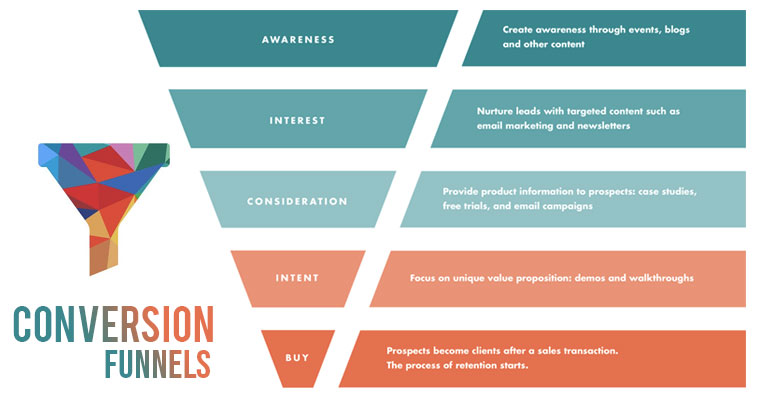Effective Sales Funnels Equals More Customers

EFFECTIVE SALES FUNNELS = MORE CUSTOMERS
By: Jason Redekopp – Marketing Consultant
The key for any successful online business is an effective sales funnel that converts site visitors from casual browsers into customers.
The idea behind using a conversion funnel is to more clearly understand the steps that a website visitor goes through before making a purchase or performing an ultimate action. Once the funnel is clearly and effectively established, the targeted process of converting leads/visitors into customers begins.
Every online business is comprised of a number of specific steps required to convert a visitor into a customer. The following steps make up the sales conversion funnel:
- Awareness.
This is the first step of the conversion funnel. Visitors are targeted via site (targeted sponsorships/ads, social networks, content marketing, etc.). The goal is to create a robust first impression and to build a relationship with prospective customers. The content should impress them enough to move forward with the next steps. - Interest/Consideration.
Once you’ve attracted a visitor, you have to spark interest in your service or product. This is achieved through relevant and interesting content. This stage of the conversion funnel is where you must stand out from your competitors. The thing that makes you different is what will generate the most interest. - Intent/Desire.
Your potential customers have now started to narrow down their buying options. According to HubSpot, companies with refined middle-of-the-funnel engagement and lead management strategy see up to 10 times higher response rate. Customers in the middle of the sales funnel are looking for content that shows them that you’re the expert. Live demos, expert tips, etc. that illustrate how and why you are better than the competition. Be sure to use testimonials, reviews, etc. to show how other customers have enjoyed your services or products. - Conversion/Retention.
The final, most critical step of the funnel. At this stage, visitors have passed through the conversion funnel and are engaged with a brand (they’ve downloaded something, subscribed to something or even called someone). Now, the goal is to convince these prospects to convert by purchasing something. You’ll want to keep your payment pages clean and simple, only displaying relevant, convincing information that will help turn your prospects into clients. Assuming you’ve optimized each step of the conversion funnel, you should have some qualified leads that ultimately become paying customers. However, your work here is not done. You will need to continue nurturing those qualified leads. After someone has taken a desired action and converted, you’ll want to get these people back into the funnel in order to coax them into repeat business.Retention is such an important part of growing your customer base, since this will be revenue that you don’t have to pay for — this audience already showed a definite interest in what you’re offering. After the job is done, continue reaching out to this customer with other opportunities. Along with nurturing this repeat business, focus on optimizing your product pages by removing any and all obstacles and doing all you can to encourage shoppers to complete the checkout process.

The ultimate goal of every conversion funnel is to make the customer experience (CX) as easy as possible by removing any obstacles that prevent or hinder a prospect from converting. If your content is relevant and your website is optimized, you will get more qualified leads.

